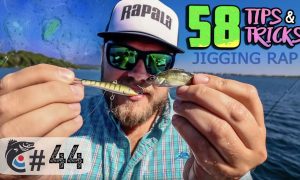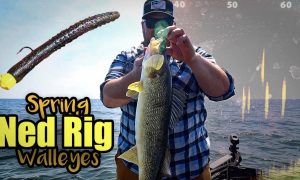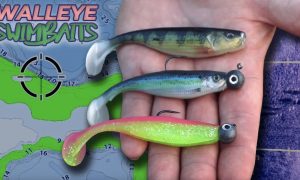Known for its zillions of walleyes, Lake of the Woods has also become a world-class pike fishing destination — especially during the Mar/Apr late-ice period. The border waters’ special regulations mean these fish can be targeted all the way through ice-out.
Mammoth pike will stage for the upcoming spawn in shallow bays all along the south shore and are ready to pop tip-up flags. Believe it or not, 40-inchers are hardly considered “big ones” when the bite is on!
Big-fish junkie Andy Walls has been specifically targeting these toothy critters for years, so we tracked him down to get his scoop on putting these freaks topside:
> Andy: “You can keep the gear pretty simple when running tip-ups, but make sure to beef things up for those larger-than-average Lake of the Woods gators.”
Gear
> “Make sure tip-ups are spinning smooth and that they have fresh 50-lb Sufix Performance Tip-Up Ice Braid. From there a quick-strike rig tied right to the tip-up line, and a 1/4-oz weight fixed above the leader to keep the bait in the strike zone.
> “Larger ‘Y yolk’ quick-strike rigs present both live and dead bait really well. They have a solid hook-up ratio with one treble fixed just before the head of the minnow and one rigged right before the tail.”
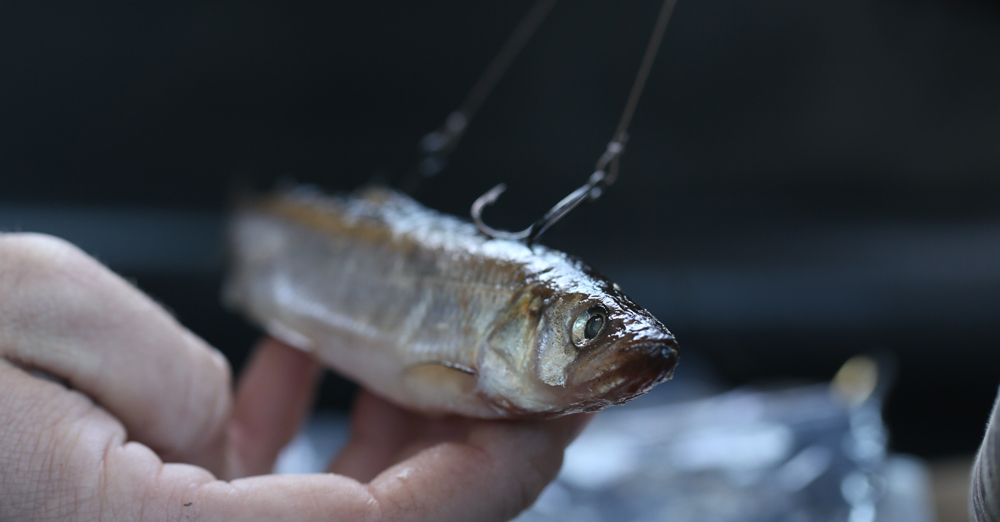
> “I’ve had the most success using 50-lb wire down to two #2 VMC Hybrid Trebles. However, there’s lots of rigging options out there…recommend using any legal option you’re most confident in.
> “Lake of The Woods has a 30-40″ protective slot, so fish between 30″ and 40” need to be quickly released back into the water. I’ve found that packing a kit — that we bring with to every flag — helps this process immensely.
> “In the kit: We keep extra rigs, sinkers, pliers, jaw spreaders, hook cutters, measuring tapes, fish grippers, a hole scoop, and a camera.
> “Being able to quickly take care of the fish after you land it and get it back in the water will help ensure a healthy release. Also allows us to get accurate measurements and a quick photo before we let them go.”
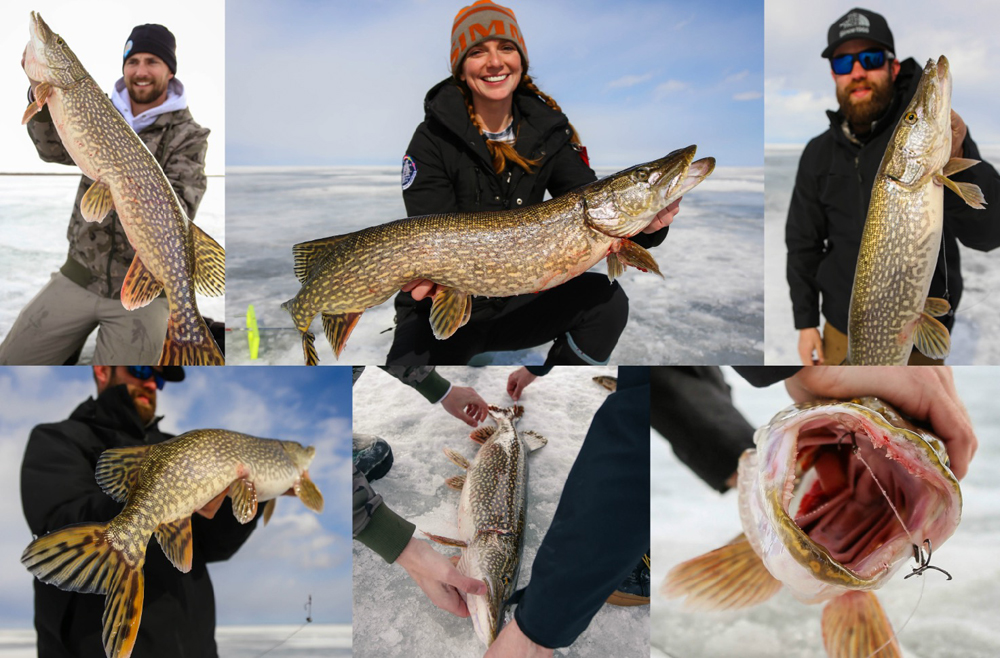
Photos by Vanilla Weekend Photography and Design
Location
> “Lake of The Woods northern pike can be caught literally almost anywhere on the lake, but there’s a large concentration of fish that really never leave the south shore.
> “Some of my best success early on in the season is in the 8-12′ range. Look for subtle structure changes like: a slightly quicker depth change, funnel, or ridge the fish may be following. Changes in the bottom content — like a rock or gravel patch — will usually provide even better action.
> “As the days start running longer and temperatures begin to inch up, pike will start to migrate in closer to the shorelines. By late March or early April, we’re typically setting lines in less than 5′.
> “The later in the year it gets, begin concentrating your efforts closer to — or directly out in front of — main spawning areas where runoff is the highest…draws fish in.”
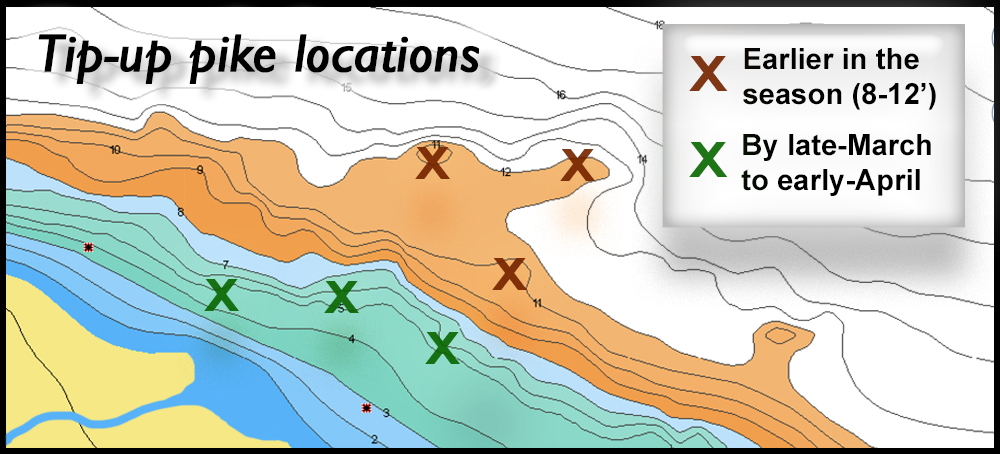
> “Spread lines out to cover as much water as possible — I like walking at least 25-35 steps between holes. The more areas you can eliminate (or find) quickly gets you more bites in a day. Once you settle into an area with fish, they seem to let you know pretty quickly.
> “Not getting bit? Try moving north/south (shallower or deeper) first…when you find the right depth those flags will pop.
> “If I’m getting activity but not getting fish…AKA “false flags”…I’ll make smaller moves east/west or play with my bait (size, type, depth set, etc). Even if it’s the minnow tripping a flag, it’s likely because a pike spooked it and didn’t eat. Dead bait seems to be better when getting a lot of those false flags.”
Setting baits
> “You’re allowed 2 lines each…makes it a little faster to see what’s working! Mix up the depths you set your baits down — covering the entire water column keeps the fish honest. I’ve caught them setting lines just inches below the ice all the way to laying baits right on the bottom.
> “Arming your spread with a mixture of live and dead baits will allow you to quickly figure out what the pike want that day. Alewife, smelt, herring, numerous sizes of live suckers, or even large shiners work well.
> “Pay close attention to which flags are going off: If dead baits are getting more bites…switch more lines over to dead bait. If more flags are going off on a certain side of the spread…start shifting the entire spread in that direction. Can turn a good day into a great day!”
When to set the hook
> “Some people like to wait and let the fish eat, but I’ll grab the flag as quick as I get to it and set the hook while they’re running…not stopped. My theory is that anytime the fish is moving, they likely have a good grip on the head or tail of the bait…both have hooks.
> “When they’re not moving, they’re adjusting the bait in their mouth…so you’ll miss half the fish that grab it.
> “Also seem to get much better hooksets when the fish is running — doesn’t take nearly as much force for the hook to penetrate since the fish is already pulling the other way.”
[BONUS: You’d be surprised how many BIG walleyes you can run into too!]

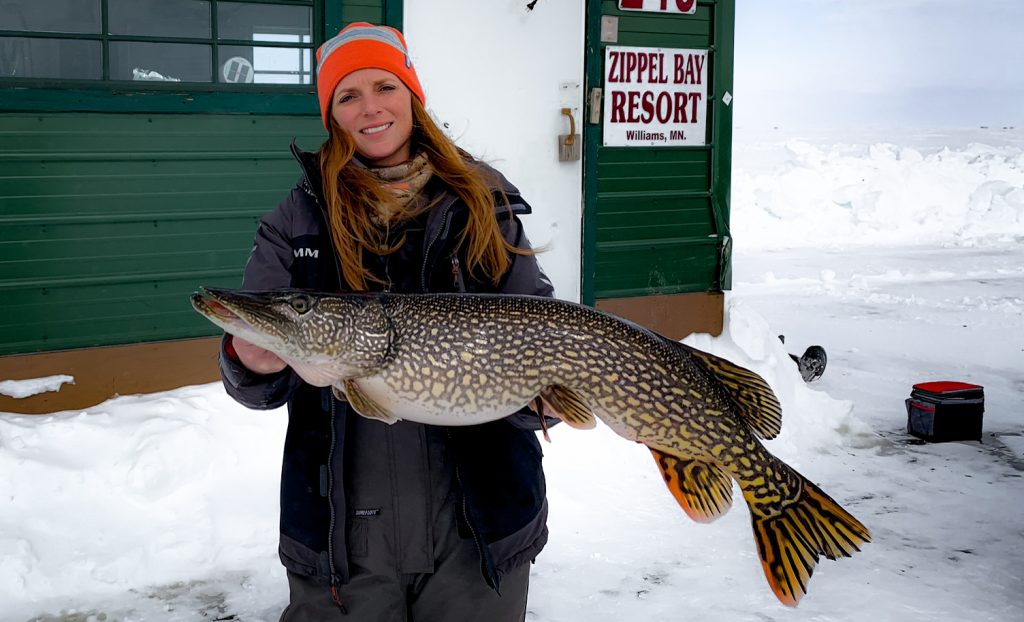
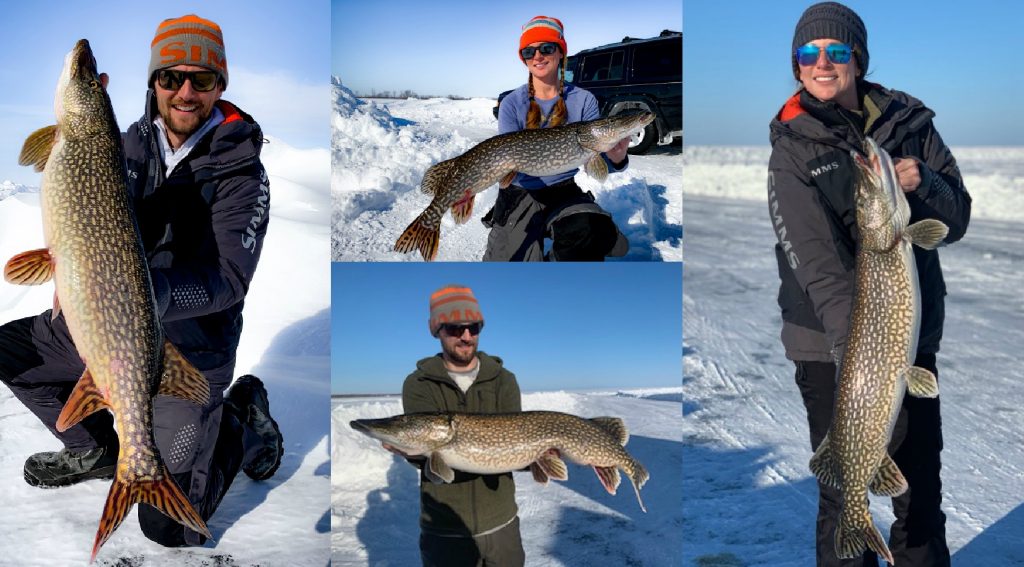
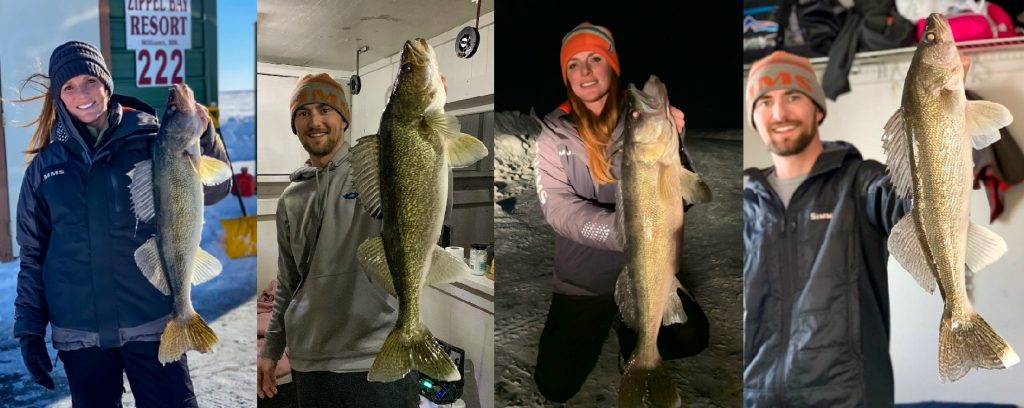


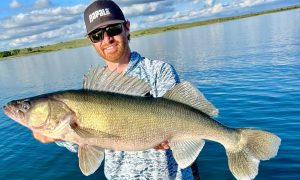

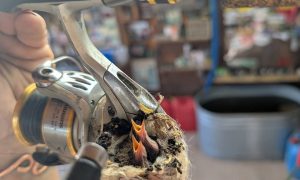



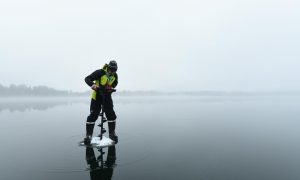



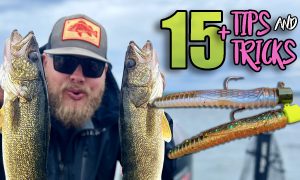

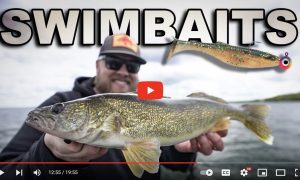

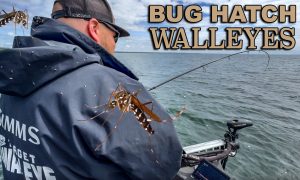

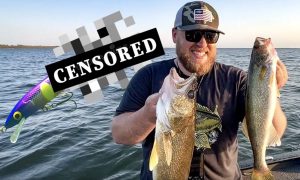

 …and...
…and...